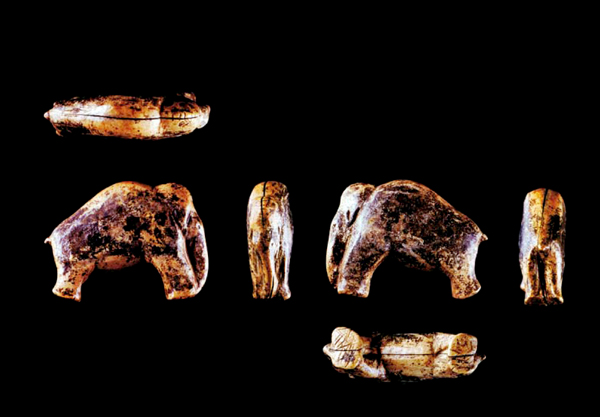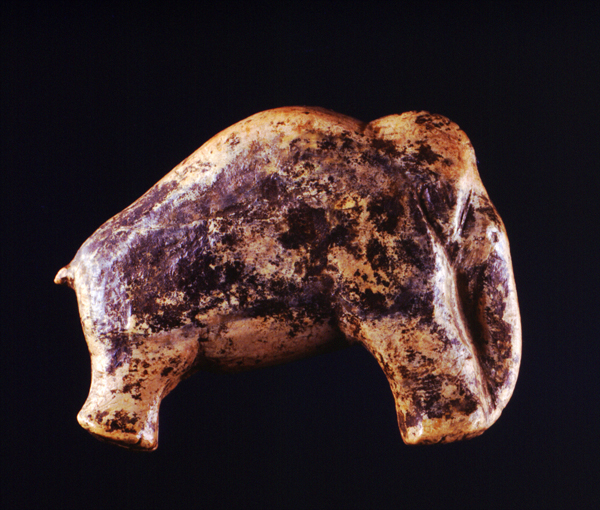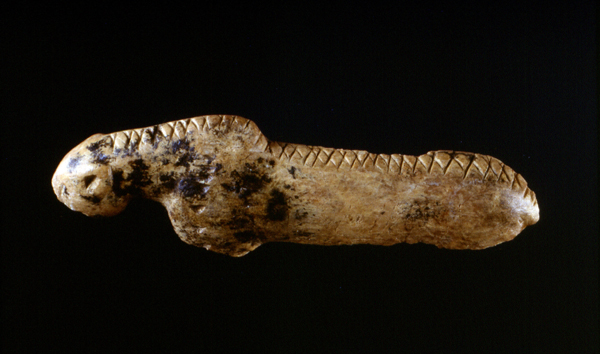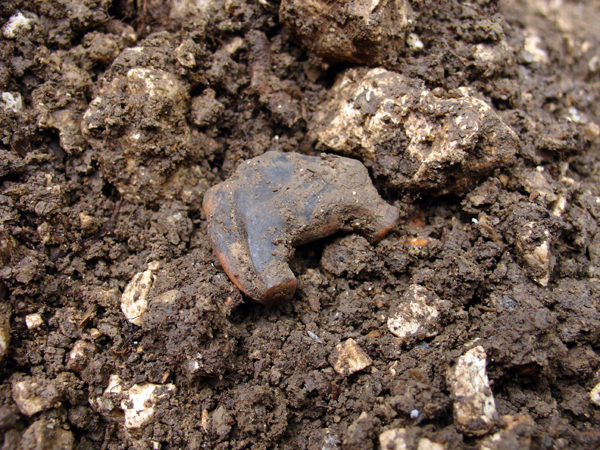Archaeologists from Tübingen report they have found parts of five figurines from the Ice Age at Vogelherd Cave in southwestern Germany. The figurines were carved from ivory and are of woolly mammoths, date to 35,000 years ago and count among the oldest and most impressive examples of figurative artworks from the Ice Age.
A particularly spectacular find is the first entirely complete figurine from the Swabian Jura depicting a finely carved mammoth. The figurines also include well preserved remains of a lion, a fragment of an additional mammoth and two as yet unidentified representations.

All of the new finds stem from the sediments of the cave, which was originally excavated by the Tübingen archaeologist Gustav Riek in the summer and fall of 1931. The context of the discoveries and multiple radiocarbon dates indicate that the figurines belong to the Aurignacian culture, which is often associated with the arrival of modern humans in Europe. Multiple radiocarbon dates from Vogelherd yielded ages between 30,000 and 36,000 years ago.
Given the richness of artifacts recovered from Riek’s groundbreaking work in 1931 and occasional discoveries by unauthorized excavations in the former cave filling, the team from Tübingen hoped to recover important new Ice Age finds from Vogelherd. The systematic re-excavation of the site began in 2005 and will continue each summer until 2009. The discovery of five figurines in 2006 as well as many other artifacts has already exceeded all expectations for the project.

The complete depiction of a mammoth and the representation of a lion augment the impressive, internationally renowned ensemble of figurines recovered by Riek in 1931. The new mammoth, like most of the Aurignacian-aged figurines from the caves of the Swabian Jura, is small and carved in exquisite detail using stone tools. The figurine is 3.7 cm long and weighs 7.5 grams. Of the well over a dozen figurines from Swabia, this find is the first to be recovered in a complete state.
Most of the other art works have fractured along the concentric rings of the ivory. The mammoth is unique in its lean form, pointed tail, powerful legs and dynamically curved trunk. The head of the figurine is decorated with six short incisions, and the soles of the mammoth’s feet show a criss-cross pattern.

The newly discovered lion is 5.6 cm long and has a long torso, outstretched neck and is decorated with ca. 30 finely incised crosses along its spine. Lions, mammoths and other powerful animals dominate the depictions of the earliest Ice Age art from the caves of the Swabian Jura.
These new finds show the splendid artistry of the Ice Age inhabitants of the Swabian Jura and further underline the observation that the earliest figurative art was beautiful, highly re-fined and far from primitive. Four caves from the region (Vogelherd, Hohlenstein-Stadel, Geißenklösterle and Hohle Fels) have all produced artworks dating in excess of 30,000 years. These finds represent some of the earliest and most impressive figurative art known worldwide.

The preliminary results from the excavation will be presented in a special exhibit at the Museum of Prehistory in Blaubeuren (24.06.07 – 13.01.08). In 2009 the figurines will be displayed in a major state exhibition in Stuttgart entitled: Cultures and Art of the Ice Age.
The authors of the paper: Einmalige Funde durch die Nachgrabung am Vogelherd bei Niederstotzingen-Stetten ob Lontal, Kreis Heidenheim are Nicholas J. Conard*, Michael Lingnau and Maria Malina.




Comments